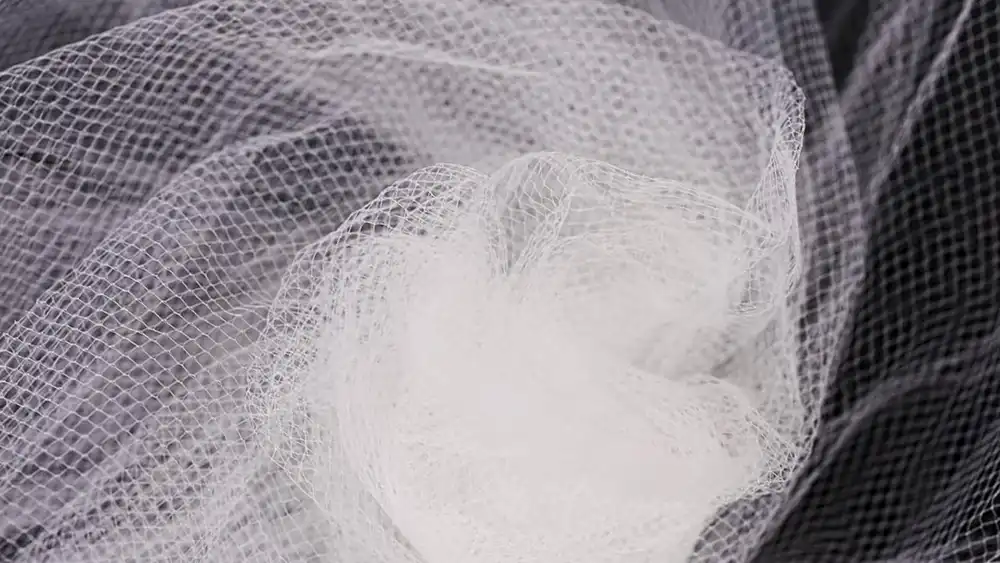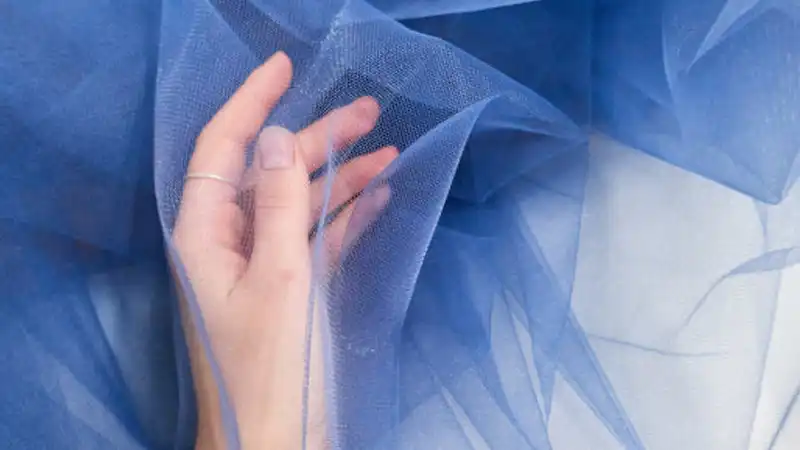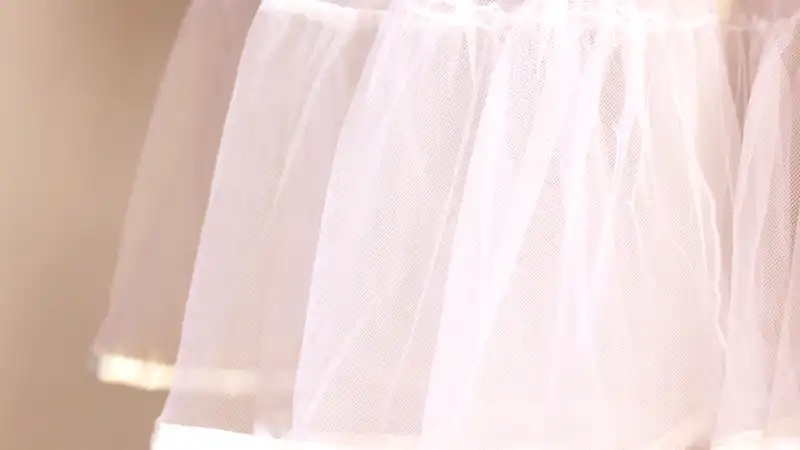Tulle fabric is known for its stiffness and durability, making it perfect for creating voluminous designs like tutus and gowns. However, there may be times when you want to soften tulle fabric for a different look or feel.
This blog post will guide you through the process of how to soften tulle fabric in the following:
What Is Tulle Fabric

Tulle is a lightweight, net-like fabric known for its delicate and airy feel. Here’s a closer look at its key characteristics:
Uses: Tulle’s versatility makes it a popular choice for various purposes:
- Apparel: Tutu skirts, veils, overlays for dresses, layering in garments.Decorations: Wedding decorations, party favors, backdrops, table runners.Crafts: Tutu making, hair accessories, gift wrapping, DIY projects.Costumes: Ballet costumes, fairy wings, Halloween costumes.
How to Soften Tulle Fabric

Tulle’s stiffness can be a double-edged sword. While it creates structure, it can also feel scratchy or hinder drape. Luckily, there are a few gentle methods to soften tulle, depending on the desired outcome and type of tulle (note: this mostly applies to synthetic tulles like nylon).
Here are some methods to try:
Method 1: The Steaming Method (Great for Light Softening and Wrinkle Removal):
Materials: Hanger, clothes steamer (or a kettle and large pot)
Steps:
- Hang the tulle on a hanger in a well-ventilated area.
- Use a clothes steamer to gently steam the tulle, holding the steamer nozzle a few inches away to avoid scorching.
- Alternatively, you can boil a pot of water and hold the tulle (at a safe distance) above the steam for a similar effect. Be careful not to let the tulle touch the boiling water.
- Let the tulle cool completely before touching it.
Method 2. The Fabric Softener Method (For a More Dramatic Softening):
Materials: Large basin, lukewarm water, gentle fabric softener (avoid if tulle is for garments that need structure)
Steps:
- Fill a large basin with lukewarm water.
- Add a small amount (around 1/4 cup) of gentle fabric softener.
- Submerge the tulle in the solution and gently swish it around for a few minutes.
- Rinse the tulle thoroughly with clean water to remove any soap residue.
- Hang the tulle to dry flat, away from direct sunlight.
Method 3: The Vinegar Rinse Method (For a Light Softening and Reduced Static):
Materials: Large basin, lukewarm water, white vinegar
Steps:
- Fill a large basin with lukewarm water.
- Add a tablespoon of white vinegar to the water.
- Submerge the tulle in the solution and gently swish it around for a few minutes.
- Rinse the tulle thoroughly with clean water.
- Hang the tulle to dry flat, away from direct sunlight.
Important Tips:
- Always test any softening method on a small, inconspicuous area of the tulle first to ensure it doesn’t damage the fabric.
- For some tulles, especially those with delicate finishes, it’s best to stick with the steaming method or avoid softening altogether.
- Never put tulle in the dryer, as the heat can damage the fabric.
Remember: The more you soften the tulle, the more it might lose its shape. Choose the method that best suits your desired outcome for your project.
How to Make Tulle Less Itchy

Itchy tulle can be a nuisance, especially when it’s part of a garment that’s meant to be worn for extended periods. Here are some steps you can take to make tulle less itchy:
- Wash the Tulle: Sometimes, a simple wash can help soften the tulle and make it less itchy. Use a gentle detergent and cold water to prevent any damage to the fabric. Hand washing is recommended to prevent any potential damage from a washing machine.
- Fabric Softener: Using a fabric softener during the wash can help soften the tulle and reduce itchiness. Be sure to rinse thoroughly to remove all the softener.
- Vinegar Soak: If washing doesn’t do the trick, you can try soaking the tulle in a vinegar solution. Mix one part white vinegar with four parts cold water and soak the tulle for an hour. Rinish thoroughly with cold water afterwards.
- Lining: If the tulle is part of a garment and is causing itchiness, consider adding a lining. A soft fabric like satin or silk can be sewn in as a lining to prevent the tulle from coming in direct contact with the skin.
- Wear Undergarments: Wearing undergarments or a slip made of soft material can also prevent the tulle from directly touching your skin and causing itchiness.
Remember, always test any method on a small, inconspicuous area first to see how the fabric reacts. If you’re unsure, it may be best to consult a professional.
Conclusion
Softening tulle fabric is a simple process that requires a little patience and care. Whether you’re working on a craft project or altering a garment, this method can help you achieve the desired texture in your tulle fabric.
Remember, always test a small, inconspicuous area first if you’re unsure about how the fabric will react to the softener.
We hope this guide helps you in your future fabric endeavors!
